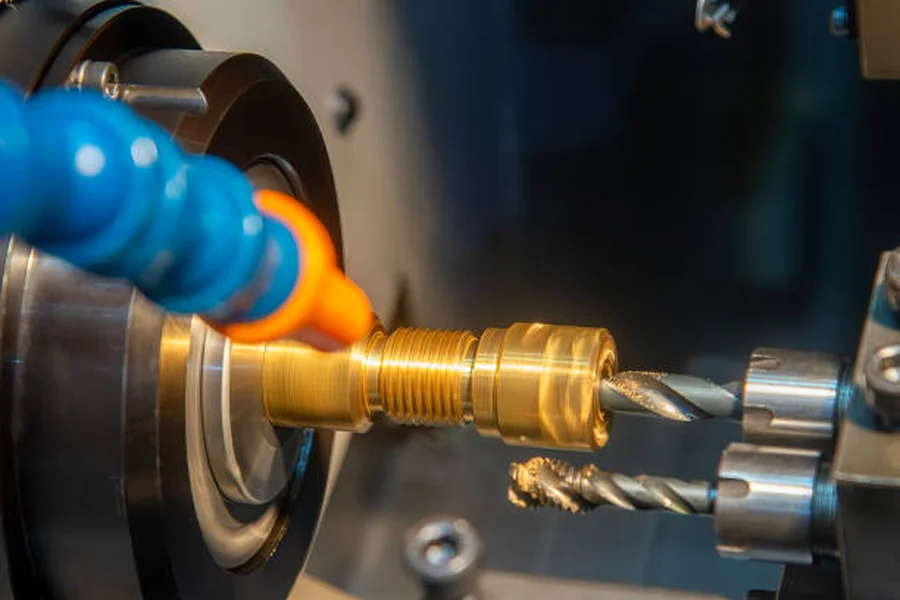The Future of CNC Turning: Trends and Innovations in Manufacturing

CNC turning has been one of the pillars of precision part manufacturing for many years. Modern industries have an insatiable need for closer tolerances, more complex features, faster delivery, and recently increased technological improvements have molded the future of CNC turning. For any modern precision machining company, adhering to these trends is not optional; it is a matter of competitiveness in the future.
This piece examines the future of CNC turning, innovative technologies that are making the most difference, and ways precision machining companies prepare for what is to come. It also captures the importance of collaborating with a dependable CNC turning firm to fulfill emerging industrial requirements.
Automation and Smart Machining Technologies
The adoption of automation and AI is transforming CNC turning at a drastic rate. In the past, CNC machines needed skilled operators who kept an eye out for every detail of a piece being fabricated. Advanced systems today can operate independently, sometimes even 24 hours a day. Such innovations are driven by smart machining technologies, which include sensors, monitoring systems, and even adaptive control systems. These technologies ensure optimal performance of machines and minimize the period they remain inactive, thus boosting productivity further.
More and more precision machining companies are adopting Industry 4.0 solutions, and smart factories are becoming the norm. These systems integrate CNC turning machines with central software that captures all necessary data and predicts maintenance needs while optimizing production flow. This results in fewer errors, better cost efficiency, and increased uptime of machines. Furthermore, the integration of Artificial Intelligence with machining processes also enhances the speed and precision with which decisions are made in real time, improving the quality and consistency of parts produced.
Automation improves productivity, and at the same time, deals with the skilled labor shortage problem that most manufacturers face today. Multi-axis machines are increasing the output of complex cuts while robotic arms are used for loading and unloading. All this can be done with reduced human intervention. Furthermore, predictive maintenance powered by AI increases uptime and smoothens processes by reducing wastage and problems.
Advanced Materials and Machining Capabilities
CNC turning is no longer limited to traditional metals like steel and aluminum. The rise of aerospace, medical, and high-tech industries has driven demand for complex parts made from advanced materials such as titanium, Inconel, carbon composites, and ceramics. These materials are incredibly strong and heat-resistant, but also difficult to machine using conventional tools. As industries require stronger, lighter, and more durable materials, CNC turning is adapting to meet these needs.
Innovative cutting tool technologies and high-speed spindles now enable precision machining companies to handle these materials with greater ease. Modern CNC lathes are equipped with cooling systems, vibration-dampening features, and ultra-hard cutting tools made from CBN or PCD, which allow for cleaner cuts and better tool life. These advancements help to reduce wear and tear on machinery while maintaining the desired level of precision.
This expansion into new materials is opening doors to applications once considered too difficult or expensive for CNC turning. As a result, industries such as space exploration, electric vehicles, and medical implants are increasingly relying on a CNC turning company that can provide precision parts made from exotic materials, ensuring durability, safety, and performance. Moreover, the evolution of multi-material capabilities in CNC turning allows manufacturers to produce hybrid parts with combinations of different materials for specialized uses.
Customization and Low-Volume Production
The CNC turning system market is evolving fast. B2B clients request customized parts to meet their specifications, many times in small or medium quantities. To meet this demand, the precision machining company is purchasing flexible, fast setup, CNC turning systems. This rapid response capability enables quick and accurate fulfillment of market needs, which is critical for industries with rapid design change requirements.
State-of-the-art technologies like live tooling, bar feeders, automatic tool changers, and even newly developed ones excel in producing high-quality products in low volumes. Flexibility is vital in sectors that have stringent timeframes and frequent component changes, such as aerospace, robotics, and defense. The ability to quickly respond to particular project requirements helps reduce operational lead times, which makes the use of CNC turning ideal for agile business environments.
As a business adapts to changing market requirements, it becomes imperative to choose a rapid custom CNC turning service. A flexible sensor housing and specialized aerospace components can be designed using sophisticated turning-through solutions that stand out and dominate the aerospace contract business.
The rising popularity of just-in-time manufacturing techniques is driving the demand for faster setups, further increasing the need for precise and accurate CNC turning capabilities.
Sustainability and Energy Efficiency in CNC Turning
Reducing sustainability’s carbon footprint is a concern in modern manufacturing. Recent advances in CNC turning are incorporating energy-efficient motors and closed-loop cutting fluid recycling systems to improve performance while minimizing environmental degradation. Efforts have also been made towards energy conservation, coolant optimization, and material waste reduction in manufacturing processes.
The acquisition of new energy-saving machines helps modernize a precision machining company to enhance its compliance and operational cost savings. New generation CNC machines have improved electricity consumption, heat emission, and noise production, making them eco-friendly and user-friendly. These measures translate to lower utility expenses and further complement a company’s green manufacturing policies.
Reducing waste gives rise to other concerns. New smart CNC machines reduce the amount of materials needed, while machine tools are monitored and replaced based on actual usage to avoid excessive rejects. Some companies are considering closed-loop dislyte, where raw materials are used to create new stock in a non-linear process. Biodegradable and less toxic cutting fluids are also increasingly being used, helping to make the processes of CNC turning more sustainable and supportive of global efforts to reduce the environmental impacts of manufacturing.
In a single sentence: A trustworthy supplier of CNC turning services must go beyond productivity and precision. Now, they also have to take into consideration the environmental impact of their processes in global manufacturing as it pertains to sustainability.
Conclusion
It is the growing necessity for sustainable, yet high-quality, cost-efficient manufacturing solutions that drives change in the future of CNC turning alongside growing innovation and flexibility. Precision machining company Relativity needs to adapt to the changes, which include automation and digital twins, exotic materials, and energy-efficient machining. CNC turning will continue to be a strong leader in automation’s response to the industry’s increasing demand for sophisticated designs combined with high precision machining.
The Automatic Rex CNC turning company is a huge asset for any business that needs agility, precision, and value growth. It is strategically beneficial to partner with advanced technological CNC turning firms as they exactly fulfill the requirements for enduring complexity, customization, and performance. The probability is that CNC turning will be the leading force in the next paradigm shift in manufacturing. High-performance industries will need to enhance their integration of new technology and innovation, which is exactly what the top-performing companies will look to implement in the upcoming years.






